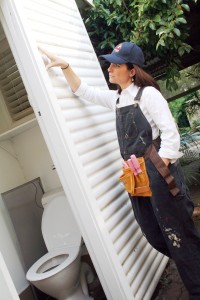The Asbestos Products Database is Australia’s first comprehensive online database to assist homeowners, renovators, tradespeople and some industries to identify asbestos-containing materials so they can be managed safely. The database provides multiple search options for products commonly used in residential and commercial properties, in agriculture, automotive, industrial, plant and marine products and features over 60 different product types and more than 550 product photographs with descriptions and locations where these products might be found in homes built or renovated prior to 1990.
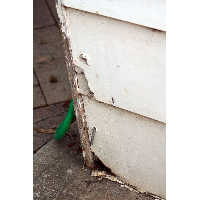
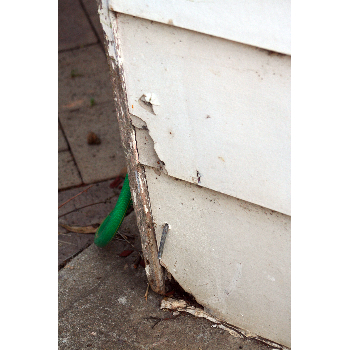 Full Size
Full Size
| Name | Broken Asbestos cladding |
|---|---|
| Caption | Broken exterior asbestos cladding - Hardiplank |
| Location | Domestic home |
| Source | Asbestos Education Committee |
| Image Id | 68 |
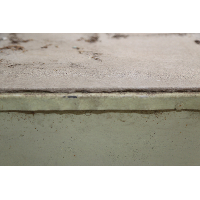
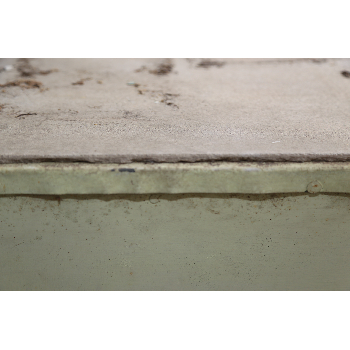 Full Size
Full Size
| Name | Cement sheet cladding - exterior 201 |
|---|---|
| Caption | Asbestos cement cladding on small backyard shed |
| Location | Domestic home |
| Source | Asbestos Education Committee |
| Image Id | 69 |
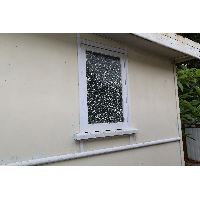
 Full Size
Full Size
| Name | Cement sheet cladding - exterior 206 |
|---|---|
| Caption | Asbestos cement sheet cladding - exterior walls and eaves |
| Location | Domestic home |
| Source | Asbestos Education Committee |
| Image Id | 70 |
Asbestos Cement Sheet
| Product description | |
|---|---|
|
Smooth, flat fibre cement sheet that is painted on-site to create a flat panel look. Tough, flexible sheeting suitable for external cladding and internal lining. Flat cement sheets were made of asbestos fibres and cement mix, commonly in the ratio of 1 to 9. In the asbestos cement sheet, asbestos fibres are bound within the cement matrix and are considered to be well immobilised in the cement and less prone to be released into the environment. Due to its asbestos content, cement sheets are heat and moisture resistant making them ideal for use in wet or heat sensitive areas. Asbestos cement sheets were used as ceiling paneling, internal and external walls, external eaves across domestic, agricultural, commercial and industrial applications. Often referred to as fibro. Fibro sheeting is perhaps one of the commonest building products to come across when doing renovations to an older building. It was widely used from the 1950s to the late 1980s.The most likely form of fibro to come across is flat sheet fibro, often used for outside cladding of houses, sheds and garages. This flat sheeting was simply nailed to the wooden framed structure thus making construction quick and cheap. Below lists the approximate dates the products ceased to be manufactured with asbestos.
|
|
| Product type | Cement - sheets, moulded product |
| Sub-Product type | |
| Trading name(s) |
Fibrolite Versilux Colorbord Hardiflex - ceased 1981 Hardiplank - ceased 1981 Harditherm - ceased 1984 Wunderflex Hardie's Compressed Sheet Villaboard - ceased 1981 Durabestos |
| Other name(s) | AC sheet, fibre cement sheet, fibro |
| Build element | Construction of exterior and interior walls and ceilings. |
| Product identification | |
|
An indicator the cladding is made of asbestos cement sheeting is moulded asbestos cement battens / cover strips used to cover the join between the sheets which were usually 40mmx6mm or 75mmx8mm or wooden d mould cover strips. Asbestos cement sheets are white to grey in colour and are quite hard and brittle. When subjected to machining, power tools or extensive weathering this product can become friable and the internal fibres that were originally bounded by cement can become liberated into the air. Another key identification is when the nail head is sitting on top of the sheet (not indented into the surface). |
|
| Known uses | Tough, flexible sheeting suitable for external cladding (walls and eaves) and internal lining of homes (walls and ceilings), sheds, garages, chook sheds, extensions and additions. |
| Asbestos fibre type |
Amosite (brown asbestos) Chrysotile (white asbestos) Crocidolite (blue asbestos) |
| Friable or Non-Friable | Non-Friable |
| Known Supplier(s) |
James Hardie CSR |
| Known place of manufacture | Australia, China, Canada, Russia |
| Date / period of manufacture | 1940s - 1987 |
| Building construction period | 1900-1920,1921-1930,1931-1940,1941-1950,1951-1960,1961-1970,1970-1980,1981-1990,Pre 1900 |
| Location |
Domestic home
|
More Images
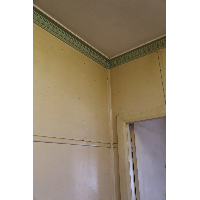
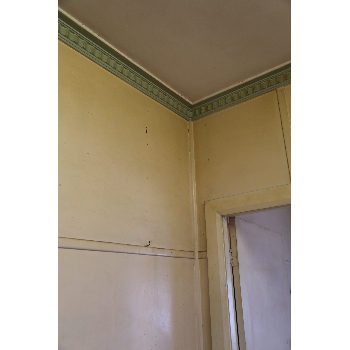 Full Size
Full Size
| Name | Cement sheet cladding - internal 95 |
|---|---|
| Caption | Cement sheet lining on walls and ceiling with asbestos cement cover strips over the joins. |
| Location | Domestic home |
| Source | Asbestos Education Committee |
| Image Id | 71 |
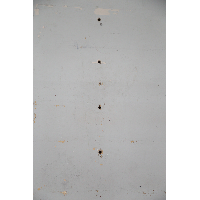
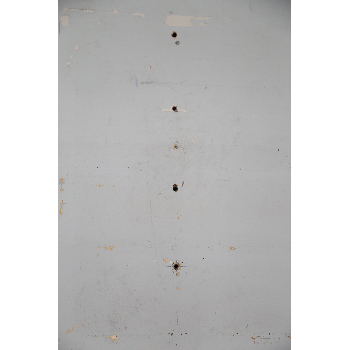 Full Size
Full Size
| Name | Asbestos Cement Sheeting - holes drilled. |
|---|---|
| Caption | Asbestos cement sheet where holes were drilled. This is a hazard. |
| Location | Domestic home |
| Source | Asbestos Education Committee |
| Image Id | 72 |
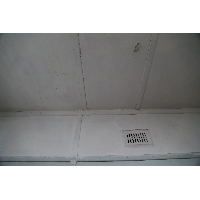
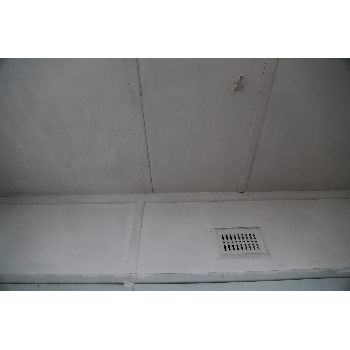 Full Size
Full Size
| Name | Asbestos cement sheeting 138 |
|---|---|
| Caption | Cement sheet lining on walls and ceiling with asbestos cement cover strips over the joins. The moulded asbestos cement battens used to cover the join between the sheets were usually 40mmx6mm or 75mmx8mm. |
| Location | Domestic home |
| Source | Asbestos Education Committee |
| Image Id | 73 |

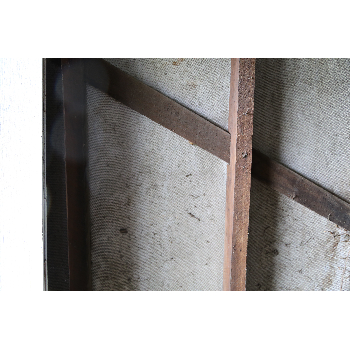 Full Size
Full Size
| Name | Underside of sheet 242 |
|---|---|
| Caption | Underside of asbestos cement cladding as seen from the inside a garage. Notice |
| Location | Domestic home |
| Source | Asbestos Education Committee |
| Image Id | 74 |
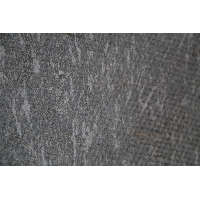
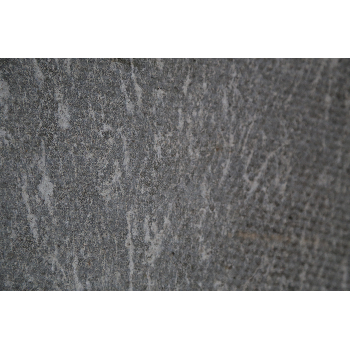 Full Size
Full Size
| Name | Close Up Reverse Asbestos Cement Sheet |
|---|---|
| Caption | Close up of underside of asbestos cement . Notice the golf ball dimpling - this is an indication that the material is asbestos cement sheeting. |
| Location | Domestic home |
| Source | Asbestos Education Committee |
| Image Id | 75 |
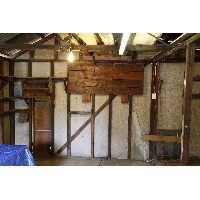
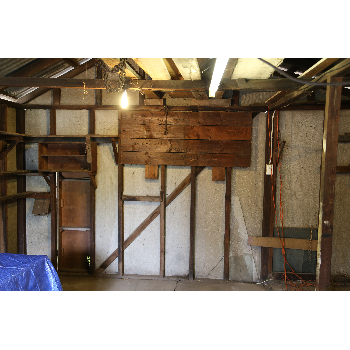 Full Size
Full Size
| Name | Internal Garage Asbestos Cement Sheeting |
|---|---|
| Caption | Inside view of fibro cladding on a garage. |
| Location | Domestic home |
| Source | Asbestos Education Committee |
| Image Id | 76 |
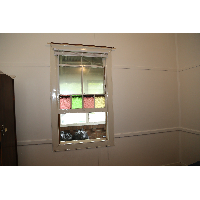
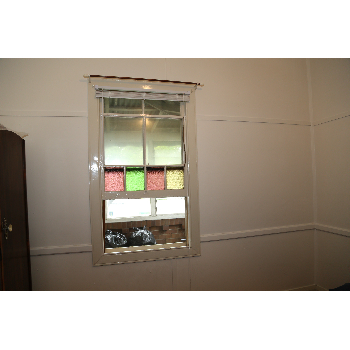 Full Size
Full Size
| Name | Internal Fibro cement wall 296 |
|---|---|
| Caption | Internal Fibro cement wall lining with window and timber D cover strips over the joins |
| Location | Domestic home |
| Source | Asbestos Education Committee |
| Image Id | 77 |
| Name | Asbestos cement extension and Gables |
|---|---|
| Caption | Asbestos cement was commonly used on extensions on pre 1950s homes. |
| Location | Domestic home |
| Source | Asbestos Education Committee |
| Image Id | 129 |
| Name | Asbestos cement extension - 1800s Victorian Terrace |
|---|---|
| Caption | Asbestos cement was commonly used on extensions on pre 1950s homes as seen in the closed in balcony on this Victorian terrace. |
| Location | Domestic home |
| Source | Asbestos Education Committee |
| Image Id | 130 |
| Name | Dormer window asbestos cement extension |
|---|---|
| Caption | Asbestos cement was commonly used on extensions on pre 1950s homes as seen in this dormer window on this Victorian terrace. |
| Location | Domestic home |
| Source | Asbestos Education Committee |
| Image Id | 131 |
| Name | Asbestos Cement cladding |
|---|---|
| Caption | Asbestos cement cladding with a profile view clearly showing the moulded asbestos cover strip / join strip and sheet. |
| Location | Domestic home |
| Source | Asbestos Education Committee |
| Image Id | 132 |

 Full Size
Full Size
| Name | Asbestos cement sheeting - wall lining and ceiling |
|---|---|
| Caption | Asbestos cement sheeting - internal wall lining with D mould wooden cover strips |
| Location | Domestic home |
| Source | Asbestos Education Committee |
| Image Id | 135 |
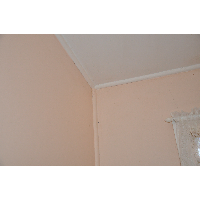
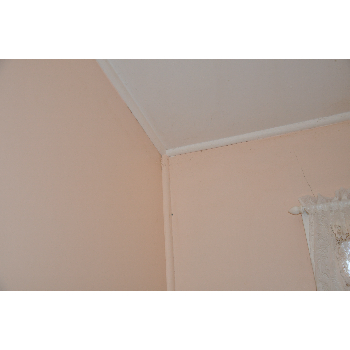 Full Size
Full Size
| Name | Asbestos cement sheeting - wall lining and ceiling |
|---|---|
| Caption | Asbestos cement sheeting - internal wall lining with D mould wooden cover strips |
| Location | Domestic home |
| Source | Asbestos Education Committee |
| Image Id | 136 |
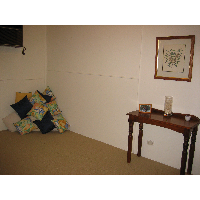
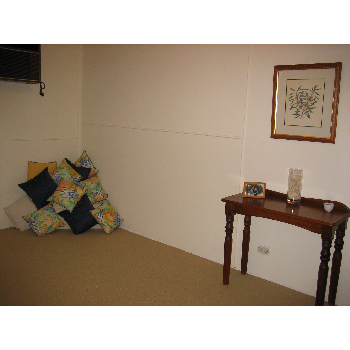 Full Size
Full Size
| Name | Asbestos cement sheeting - wall lining |
|---|---|
| Caption | Asbestos cement sheeting - wall lining freshly painted |
| Location | Domestic home |
| Source | Asbestos Education Committee |
| Image Id | 137 |
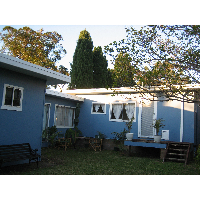
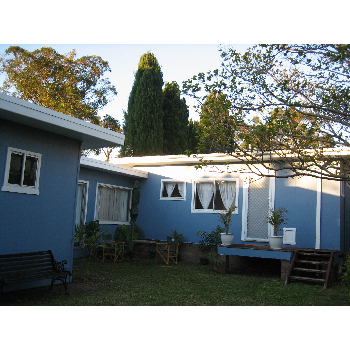 Full Size
Full Size
| Name | Cement sheet cladding - exterior |
|---|---|
| Caption | Asbestos cement sheet cladding - exterior. Eaves and roof also asbestos cement. |
| Location | Domestic home |
| Source | Asbestos Education Committee |
| Image Id | 138 |
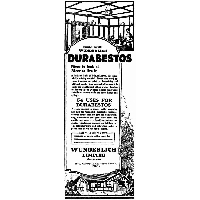
 Full Size
Full Size
| Name | Durasbestos Ad 1929 |
|---|---|
| Caption | Durasbestos ad from 1929 |
| Location | Other |
| Source | Archive: Wikipedia - Source Unknown - Western Mail, 1929 (29 August 1929). |
| Image Id | 186 |
| Name | Asbestos Cement Sheeting - shed |
|---|---|
| Caption | Asbestos Cement Sheeting - shed exterior |
| Location | Agricultural |
| Source | Asbestos Education Committee |
| Image Id | 187 |
| Name | Asbestos Cement Sheeting - garage exterior |
|---|---|
| Caption | Asbestos Cement Sheeting - garage exterior. Many homes in the affluent areas erected a fibro garage to house their new car in the 1950s - 1960s |
| Location | Domestic home |
| Source | Asbestos Education Committee |
| Image Id | 188 |

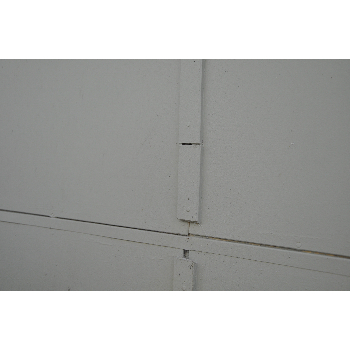 Full Size
Full Size
| Name | Asbestos Cement Sheeting - garage exterior |
|---|---|
| Caption | Run down asbestos cement sheeting on garage with moulded asbestos cover strips missing or broken. |
| Location | Domestic home |
| Source | Asbestos Education Committee |
| Image Id | 194 |
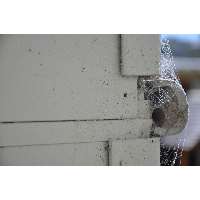
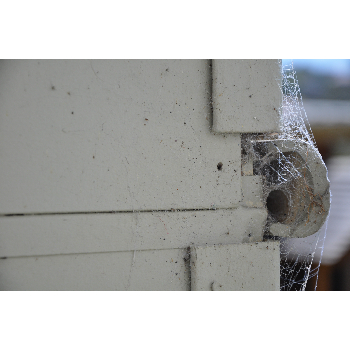 Full Size
Full Size
| Name | Asbestos Cement Sheeting and trim |
|---|---|
| Caption | Run down asbestos cement sheeting on garage with moulded asbestos cover strips and corner moulding missing or broken. The fibre texture can be seen at the edge of the broken strip. |
| Location | Domestic home |
| Source | Asbestos Education Committee |
| Image Id | 195 |

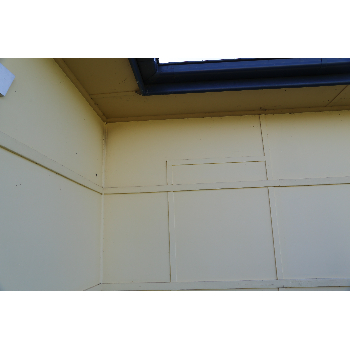 Full Size
Full Size
| Name | Asbestos Cement cladding - exterior |
|---|---|
| Caption | Asbestos cement sheet cladding - exterior with moulded cover strips. Eaves also asbestos cement. |
| Location | Domestic home |
| Source | Asbestos Education Committee |
| Image Id | 196 |
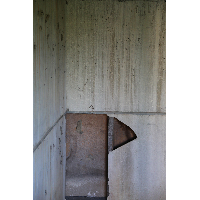
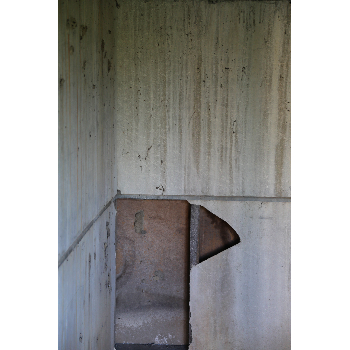 Full Size
Full Size
| Name | Unpainted cement sheeting |
|---|---|
| Caption | Hazardous asbestos cement sheeting under a house which has never been painted and has sections broken. |
| Location | Domestic home |
| Source | Asbestos Education Committee |
| Image Id | 197 |

 Full Size
Full Size
| Name | Asbestos Cement cladding and eaves - exterior |
|---|---|
| Caption | This home is clad in asbestos cement sheeting with eaves also made of asbestos cement. The Flue may have asbestos containing material at joins. |
| Location | Domestic home |
| Source | Asbestos Education Committee |
| Image Id | 198 |
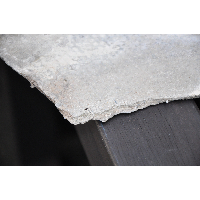
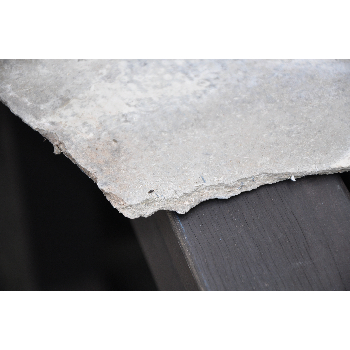 Full Size
Full Size
| Name | Close Up Asbestos Cement Sheet |
|---|---|
| Caption | Close up of broken asbestos cement showing Chrysotile fibres. |
| Location | Domestic home |
| Source | Asbestos Education Committee |
| Image Id | 199 |
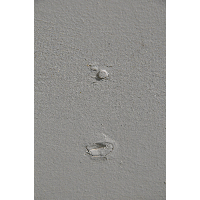
 Full Size
Full Size
| Name | Nails in cement sheeting |
|---|---|
| Caption | Special nails, galvanised shear point, where designed to fix asbestos sheeting to the wall. The tip of the nail is blunt (no point) with a flat head. They were punched into the asbestos cement sheeting rather than splitting it. Nails stand slightly proud of the surface of the sheet. |
| Location | Domestic home |
| Source | Asbestos Education Committee |
| Image Id | 200 |
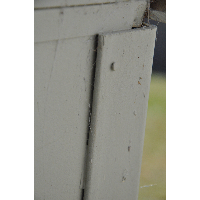
 Full Size
Full Size
| Name | Asbestos cement - wall and corner moulding |
|---|---|
| Caption | Close up of asbestos cement sheeting with corner moulding. The galvanised shear point is visible slightly proud of the surface. |
| Location | Domestic home |
| Source | Asbestos Education Committee |
| Image Id | 201 |
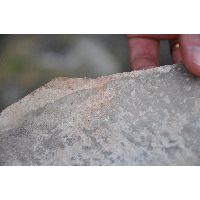
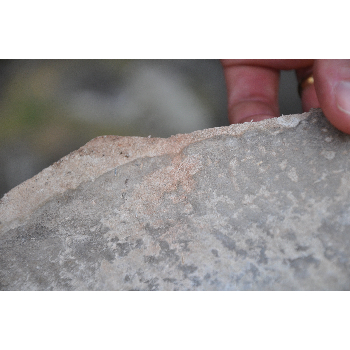 Full Size
Full Size
| Name | Close Up Asbestos Cement Sheet |
|---|---|
| Caption | Close up of broken asbestos cement showing Chrysotile fibres. |
| Location | Domestic home |
| Source | Asbestos Education Committee |
| Image Id | 202 |
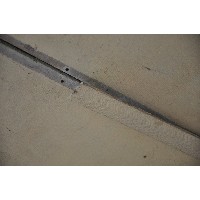
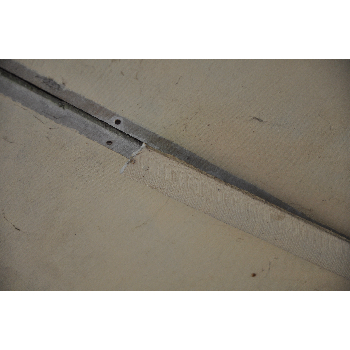 Full Size
Full Size
| Name | AC Eave and cover strip - hazard |
|---|---|
| Caption | Asbestos cement eave with broken / falling off moulded asbestos cover strip exposing the join. This is hazardous as it exposes raw sheeting and when the strip falls off will break causing the release of asbestos dust and fibres. |
| Location | Domestic home |
| Source | Asbestos Education Committee |
| Image Id | 203 |
| Name | Asbestos cement - Shadowline |
|---|---|
| Caption | Asbestos cement - Shadowline wall sheeting |
| Location | Domestic home |
| Source | Asbestos Education Committee |
| Image Id | 213 |
| Name | Asbestos cement - Shadowline |
|---|---|
| Caption | Asbestos cement - Shadowline wall sheeting |
| Location | Domestic home |
| Source | Asbestos Education Committee |
| Image Id | 214 |

 Full Size
Full Size
| Name | Flat cement sheeting - exterior |
|---|---|
| Caption | Flat cement sheeting with asbestos containing material cornice cover strips. |
| Location | Domestic home |
| Source | Queensland Government |
| Image Id | 283 |

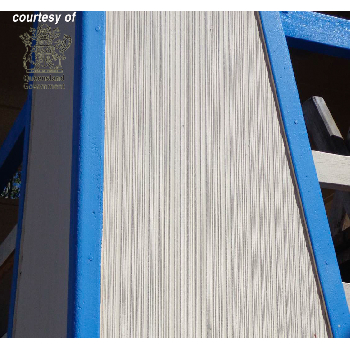 Full Size
Full Size
| Name | Striated Sheet with ACM Strips |
|---|---|
| Caption | Striated Sheet with asbestos containing material cornice cover strips. |
| Location | Commercial |
| Source | Queensland Government |
| Image Id | 284 |
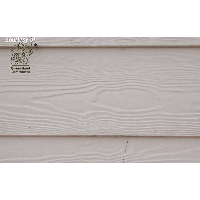
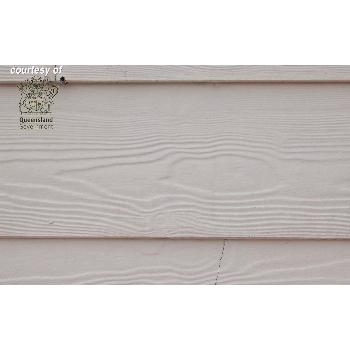 Full Size
Full Size
| Name | Hardiplank Woodgrain |
|---|---|
| Caption | Hardiplank Woodgrain |
| Location | Domestic home |
| Source | Queensland Government |
| Image Id | 285 |
| Name | Asbestos Cement Sheeting Behind Ceramic Tiles |
|---|---|
| Caption | Asbestos is located behind the bathroom wall tiles in the adhesive and the cement sheeting. |
| Location | Domestic home |
| Source | Asbestos Awareness |
| Image Id | 331 |
| Name | Asbestos cement was commonly used as gables |
|---|---|
| Caption | Gables are located at the ends of the roof line and in locations where the roof height or pitch has a change. |
| Location | Domestic home |
| Source | Asbestos Awareness |
| Image Id | 346 |
| Name | Asbestos cement used as gables |
|---|---|
| Caption | AC sheeting as gables. Gables are located at the ends of the roof line and in locations where the roof height or pitch has a change. |
| Location | Domestic home |
| Source | Asbestos Awareness |
| Image Id | 347 |
| Name | Asbestos cement used as gables |
|---|---|
| Caption | Deteriorated AC sheeting as gable on shed. This is a hazard. |
| Location | Domestic home |
| Source | Asbestos Awareness |
| Image Id | 348 |
| Name | Asbestos cement used as gables |
|---|---|
| Caption | AC sheeting as gables. Gables are located at the ends of the roof line and in locations where the roof height or pitch has a change. |
| Location | Domestic home |
| Source | Asbestos Awareness |
| Image Id | 349 |

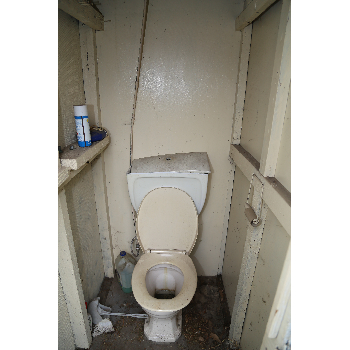 Full Size
Full Size
| Name | Outhouse |
|---|---|
| Caption | Internal of a AC sheet outhouse / outside toilet |
| Location | Domestic home |
| Source | Asbestos Awareness |
| Image Id | 365 |
| Name | Outhouse with Tilux |
|---|---|
| Caption | AC Exterior outhouse lined with Tilux sheeting |
| Location | Domestic home |
| Source | Asbestos Awareness |
| Image Id | 366 |
| Name | Under house - Asbestos Cement |
|---|---|
| Caption | AC Sheets as form work and sheeting located underneath house |
| Location | Domestic home |
| Source | Asbestos Awareness |
| Image Id | 367 |
| Name | Splashback - Vinyl |
|---|---|
| Caption | Asbestos Cement sheeting as splash back covered in vinyl. |
| Location | Domestic home |
| Source | Asbestos Awareness |
| Image Id | 375 |
| Name | AC Sheet behind wallpaper |
|---|---|
| Caption | AC Sheeting is located behind this original wallpaper. The small round nail heads are visible under the wallpaper. |
| Location | Domestic home |
| Source | Asbestos Awareness |
| Image Id | 379 |
| Name | AC Splashback |
|---|---|
| Caption | Unpainted Damaged Asbestos Cement Splashback |
| Location | Domestic home |
| Source | Asbestos Awareness |
| Image Id | 382 |
| Name | Asbestos Cement Sheeting - Extension to Federation Home |
|---|---|
| Caption | Extension to Federation house made from asbestos cement sheeting |
| Location | Domestic home |
| Source | Asbestos Awareness |
| Image Id | 389 |
| Name | Unsealed AC Sheeting in Laundry |
|---|---|
| Caption | Unlined and unsealed asbestos cement sheeting of laundry |
| Location | Domestic home |
| Source | Asbestos Awareness |
| Image Id | 393 |
| Name | AC Sheeting in Laundry |
|---|---|
| Caption | Asbestos Cement Walls are behind wall paper in this laundry |
| Location | Domestic home |
| Source | Asbestos Awareness |
| Image Id | 394 |
| Name | Unsealed AC Sheeting in Laundry |
|---|---|
| Caption | Unsealed asbestos cement sheeting in laundry as splash back |
| Location | Domestic home |
| Source | Asbestos Awareness |
| Image Id | 396 |



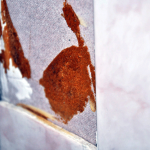
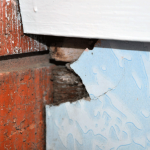

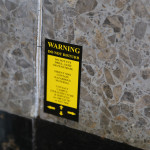
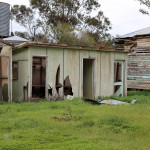

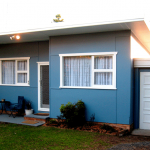
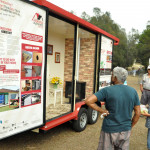


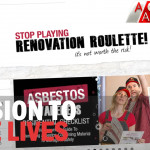
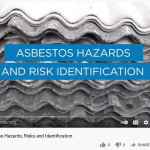

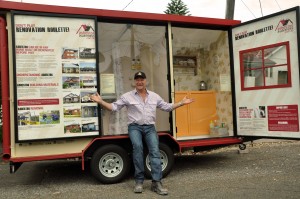
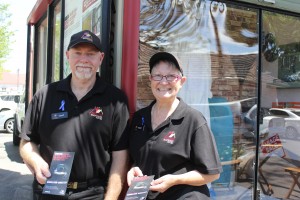

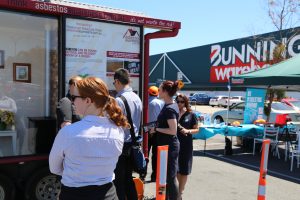
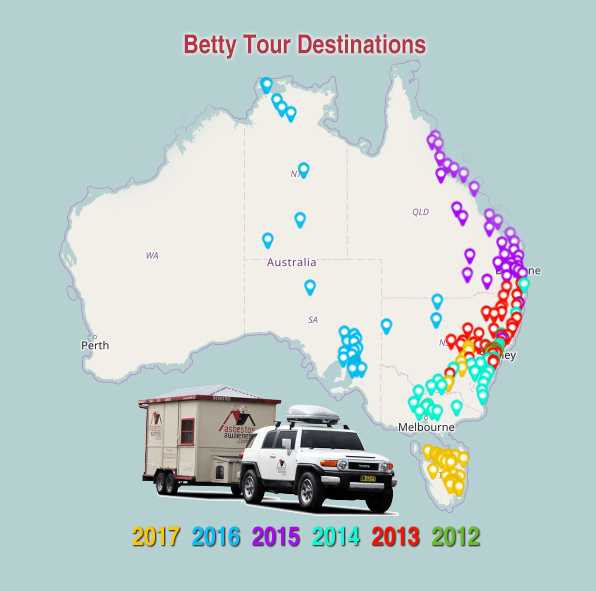 isited various community events including:
isited various community events including:






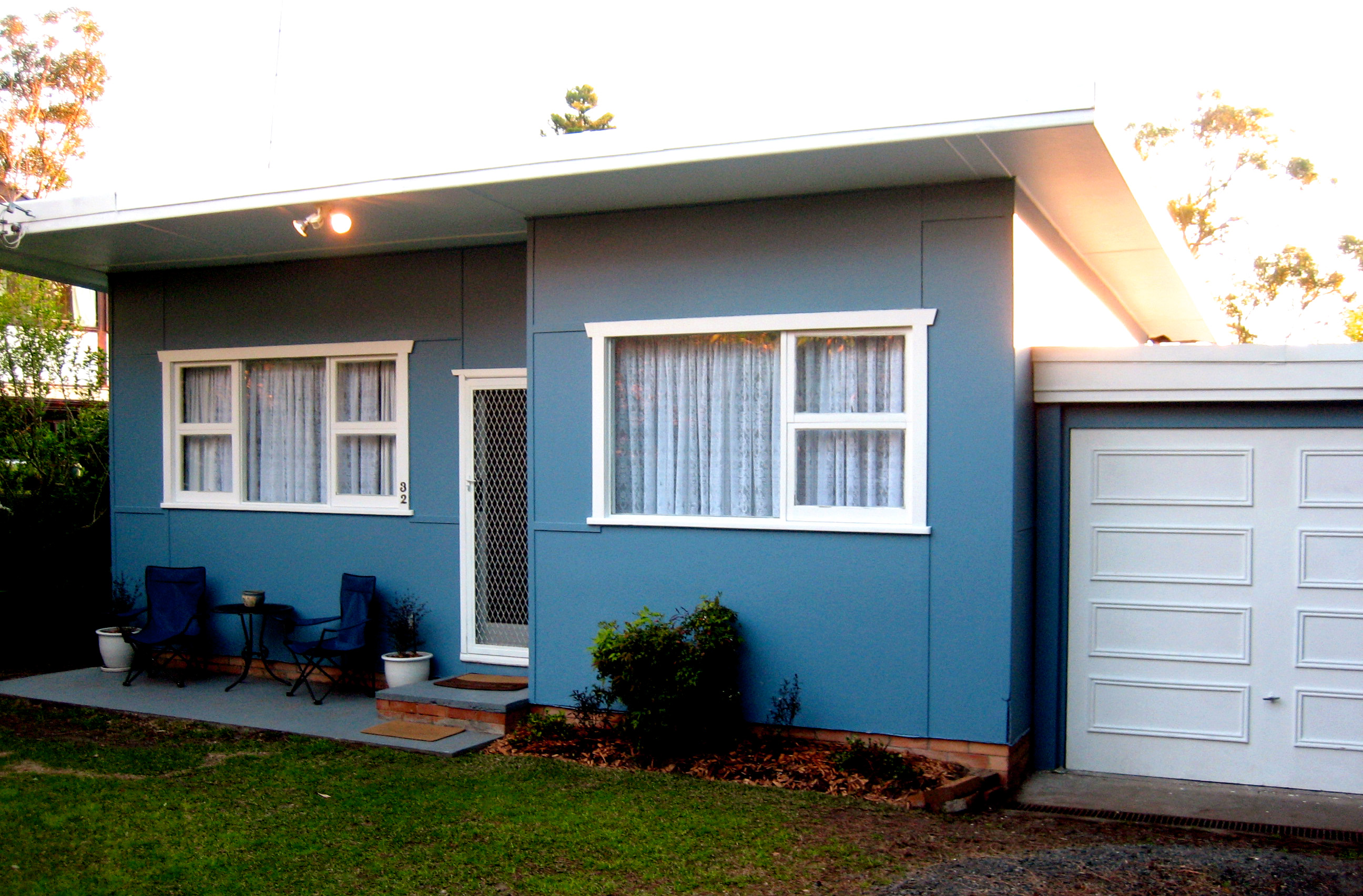 Asbestos fibres were used widely in
Asbestos fibres were used widely in 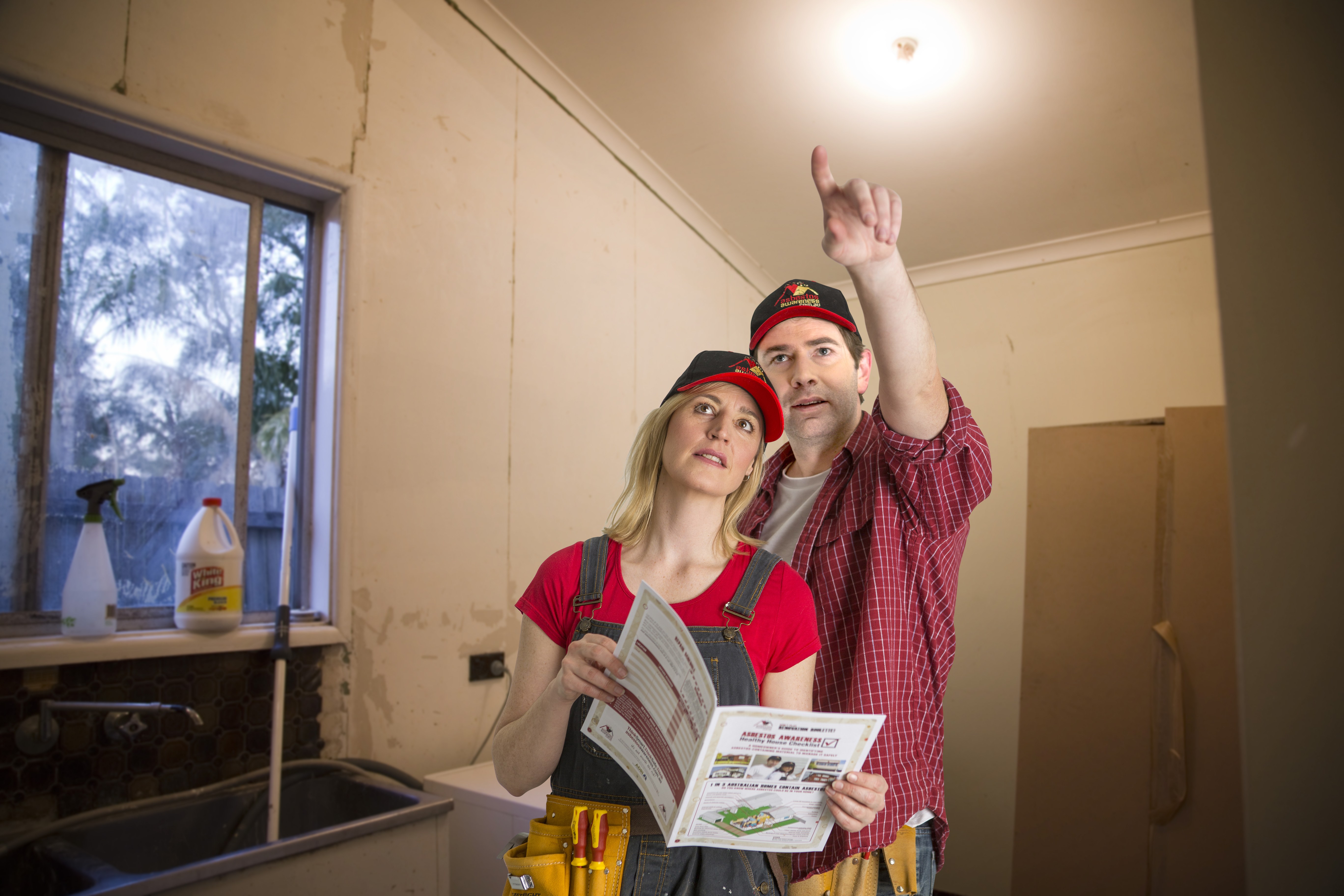 materials in and around homes, plus the knowledge to manage it safely. This practical guide enables homeowners to conduct a simple, easy to follow visual inspection of their property. By following the easy step-by-step instructions, in under an hour homeowners can have a better understanding of the types of products that might be in their home and if it’s in need of maintenance, repair or removal. Visit the
materials in and around homes, plus the knowledge to manage it safely. This practical guide enables homeowners to conduct a simple, easy to follow visual inspection of their property. By following the easy step-by-step instructions, in under an hour homeowners can have a better understanding of the types of products that might be in their home and if it’s in need of maintenance, repair or removal. Visit the 